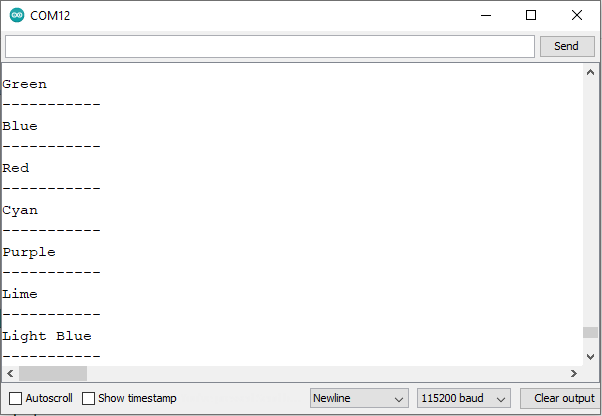Hi everyone, in this tutorial we will use built-in RGB LED on ARIES v3.0 board to get additional colored LED.
ARIES v3.0 Board
The ARIES v3.0 is a fully indigenous and a “Made in India” product to get started with basic microprocessor programming and embedded systems. This board is built upon a RISC-V ISA compliant VEGA Processor with easy-to-use hardware and software. For more details about ARIES v3.0 boards please refer to the ARIES development boards and Ecosystem.
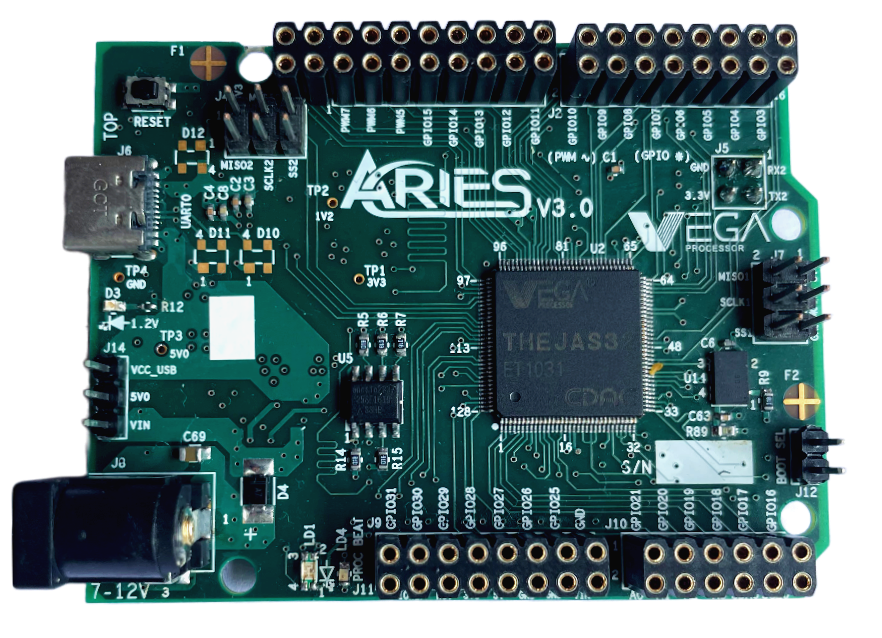
RGB LED
RGB LED is basically a multiple color LED and as you already know LED stands for light emitting diode. It consists of three LEDs and they are a combination red, green and blue. So, whenever voltage applied to red terminal, red light will emit and similarly when voltage applied to green and blue terminal green and blue light will emit respectively.
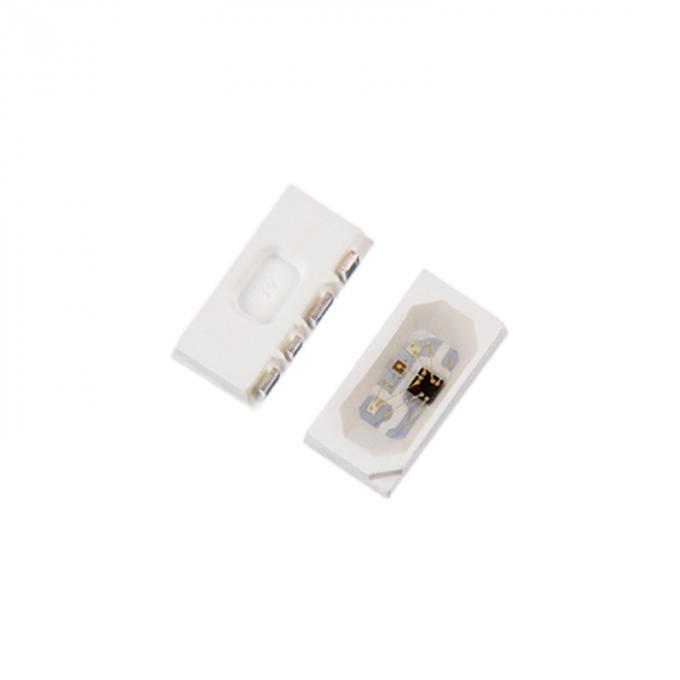

The ARIES v3.0 has SMD LED (Surface Mount Device Light Emitting Diode). It is widely used in various application due to its small size, efficiency, and versatility. SMD LEDs are integrated into a surface-mount package, which allows then to easily mounted onto printed circuit boards (PCBs) or other surface.
Prerequisites
- Windows 10 or above/Linux (64 bit)
- Arduino IDE
- VEGA ARIES Board support package
Components Required
- ARIES v3.0 Board
- USB type C to USB type A cable
Note: All of the following boards can be used for this project
Procedure
Let’s power up the ARIES v3 board via the USB port of a Laptop/Desktop/PC and burning the code into the ARIES v3 board, we have to use a USB type C to USB type A cable. The cable should be connected to UART-0 port of the ARIES v3 board, and the Laptop/Desktop/PC should be preinstalled with Arduino IDE and VEGA ARIES boards of latest version.
- Now, Open the Arduino IDE
- Make sure you have selected ARIES v3 Board from Tools -> Board -> VEGA Processor: ARIES Boards -> ARIES v3
- Enable flash mode from Tools -> Flash Mode -> Enabled
- Select Programmer as VEGA FLASHER from Tools -> Programmer -> VEGA FLASHER
- Also select appropriate port, Tools -> Port -> COM* (ARIES Board)
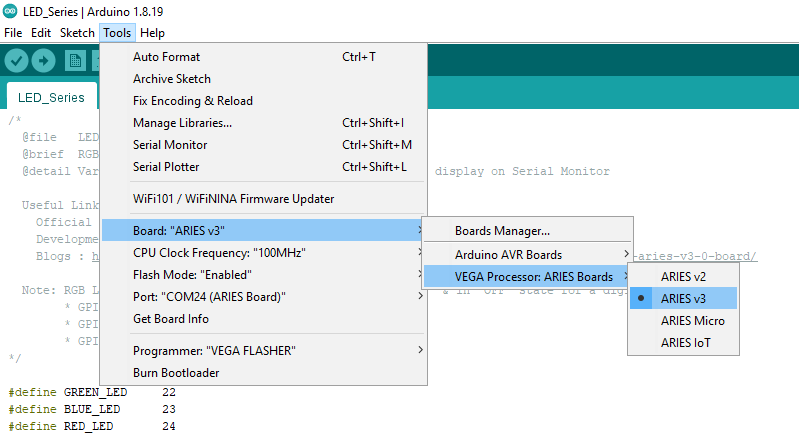
- Now, Open File -> Examples -> Under Examples for ARIES v3 -> GPIO -> LED_Series
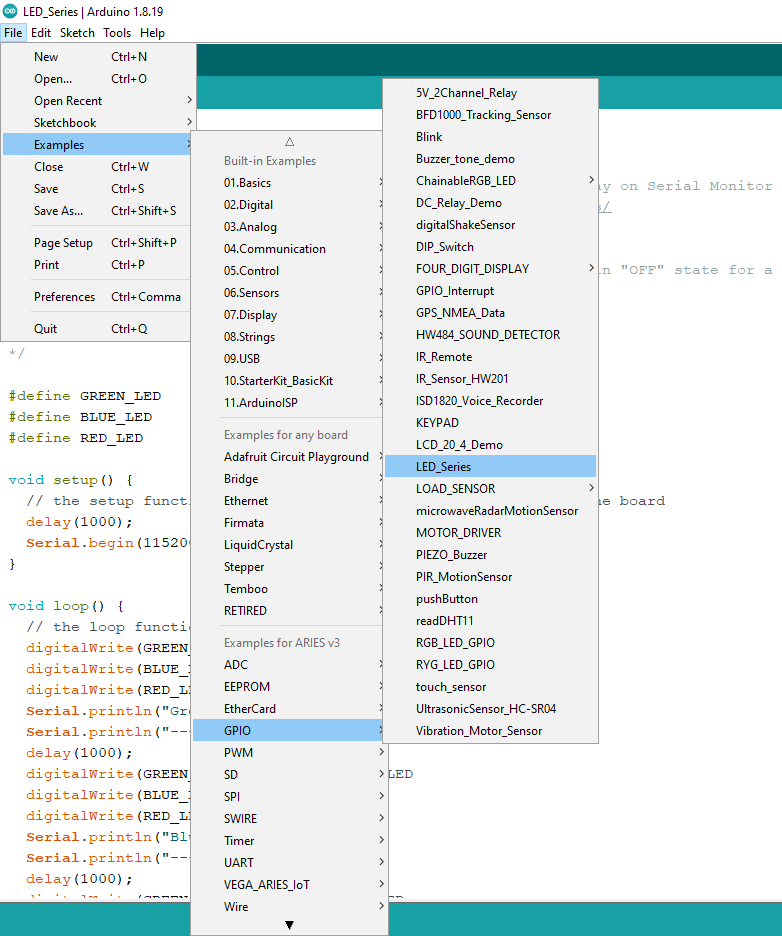
- Finally Upload the code and Open Serial Monitor with 115200 baudrate.
Output
Once we are done uploading the sketch, the LED will turn ON starting from color green followed by blue and then red. Later additionally cyan, purple, Lime and Light blue color light will emit from LED which are the combinations of base RGB colors. For example, turning on blue and red LED at a same time, we get purple color light.
